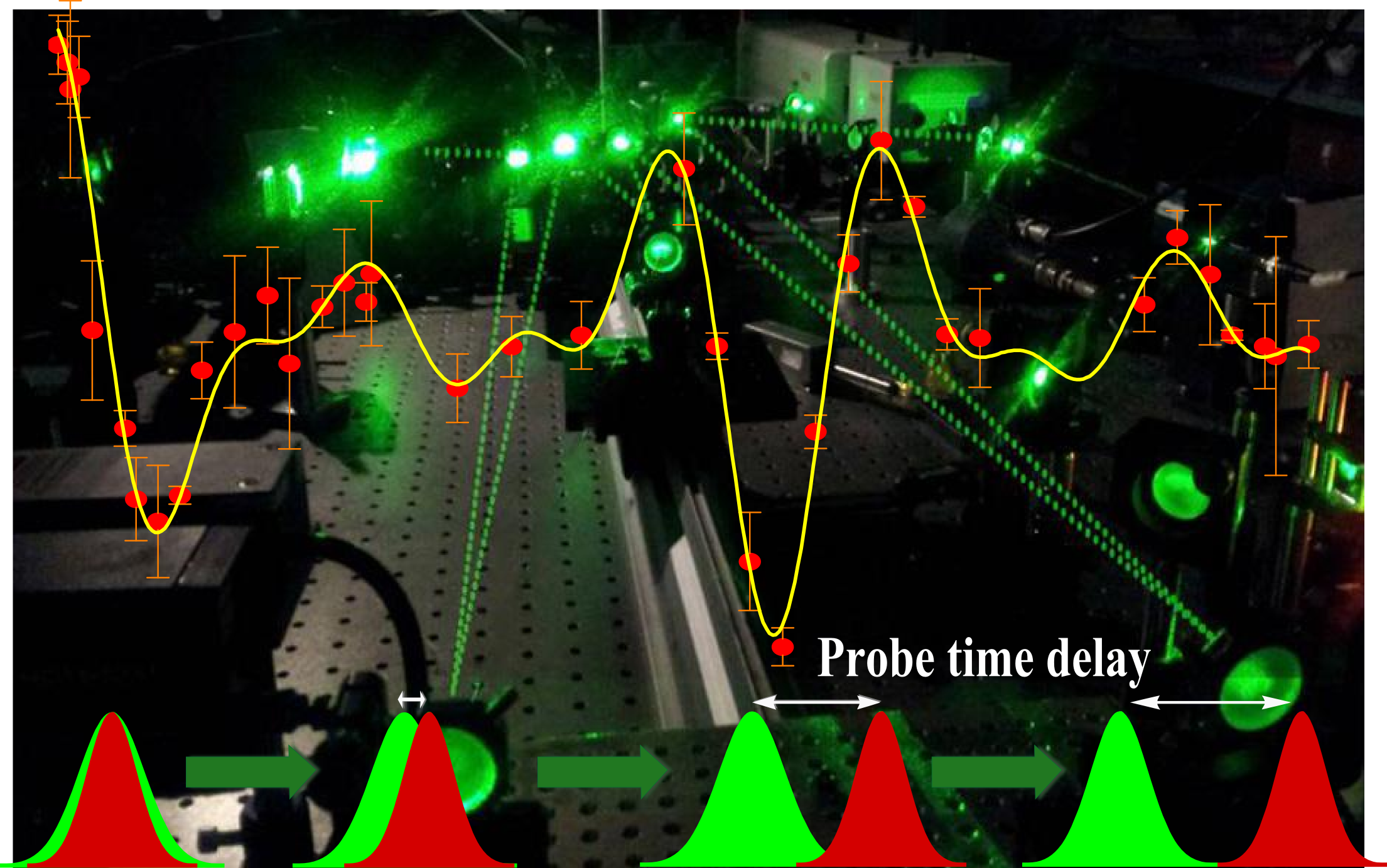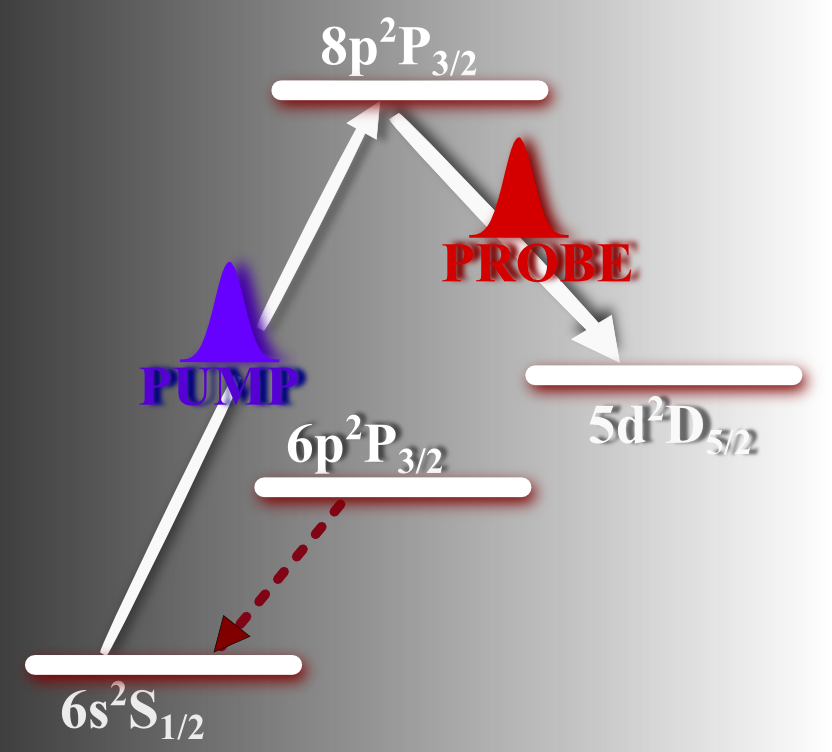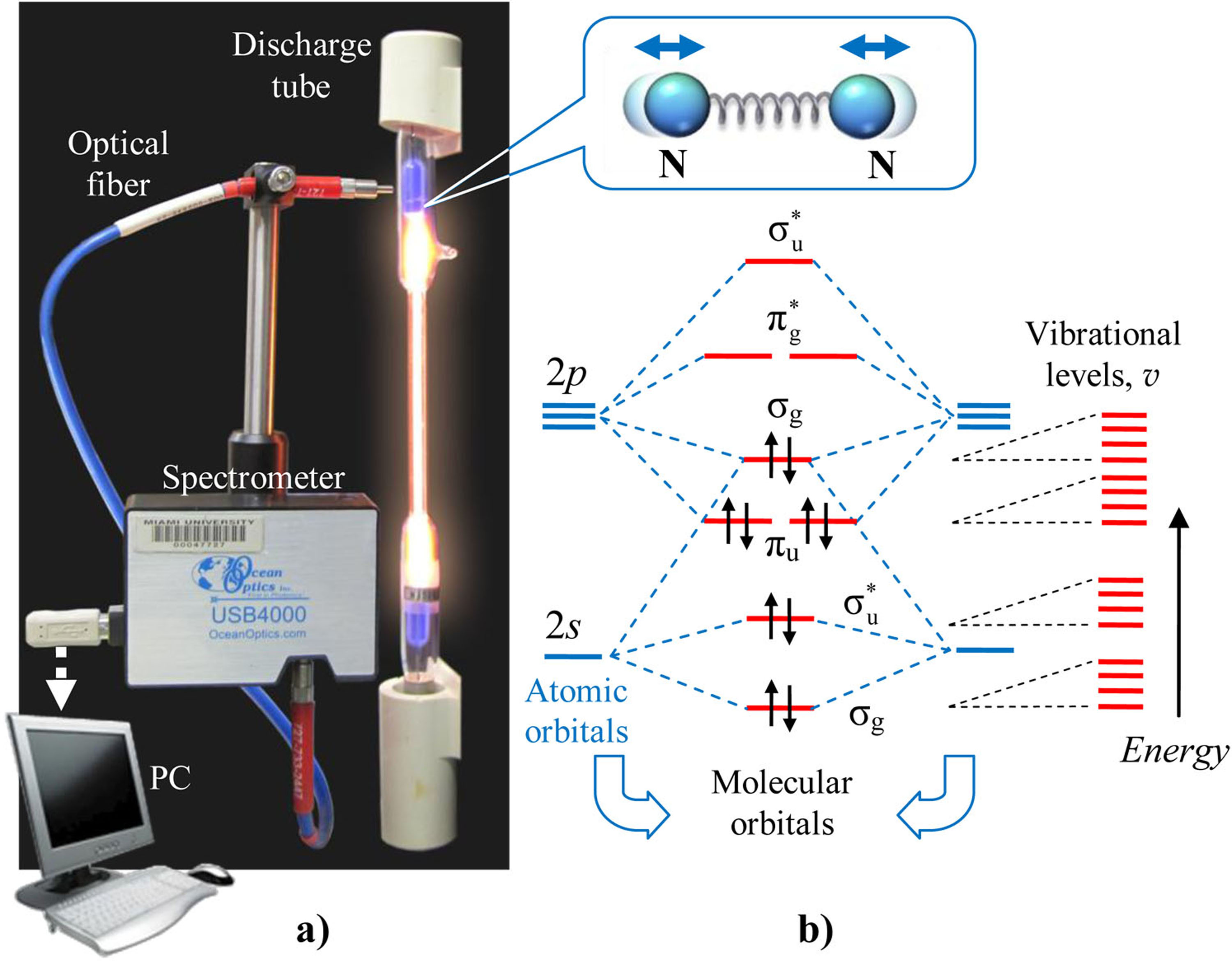Time Resolved Spectroscopic Study of Diatomic Molecules
|
In this project, we are interested in measuring the "highly excited state lifetime" of a sodium molecules. Lifetime is the amount of time a molecule remains in a high energy state after absorbing light. The characteristic timescale of this lifetime is determined by the laws of nature, and is one of the fundamental properties of the molecule. It is typically a few tens of nanoseconds (billionths of a second). The lifetime of sodium molecules is measured in this project using very precisely pulsed lasers in a technique called "time-resolved spectroscopy." When the lasers are pulsed on, a high-speed electronic stopwatch is switched on to record the amount of time that lapses between the absorption and the emission of the photon. The data obtained has applications in fields such as astrophysics (determining what kind of molecules are in space and how they formed), plasma physics (determining the temperatures of very hot materials), and laser physics (helping to predict what materials could be used to make better lasers).
Our project focuses on experimental studies of radiative lifetime measurements (for a variety of rotational quantum numbers) of the excited ion-pair state of sodium molecules from a direct fluorescence decay using a time-resolved spectroscopic technique. Sodium molecules can exhibit exotic behavior since their structural and radiative properties vary strongly as a function of internuclear distance. This is due to the effect of the ion pair character, which causes the formation of double well in the molecular potential energy curves. Recently, the radiative lifetimes of some of the ion-pair states of sodium molecules have been calculated and mapped out. Our measurements provide benchmark values against theoretical approaches. Measurements of excited state lifetimes play an important role in understanding the interplay between molecular potential energies, molecular electronic structure, and related quantities such as transition probabilities, oscillator strengths, and line intensities. The experimental approach is to create sodium molecules in a heatpipe oven and excite them by a two-step laser double resonance excitation to reach the ion-pair state. Molecular fluorescence detection, atomic fluorescence detection from dissociating molecules (a process which happens on different time scale than molecular radiative timescale), and polarization of atomic fluorescence from predissociating molecule can be measured. If a dissociated molecule is detected, polarization measurement can provide detail information about the nonadiabatic dynamics of the predissociation process. Thus, the time-resolved spectroscopic technique provides an important tool for studying the intramolecular vibrational energy distribution in molecules and the dynamics of atomic motion in a molecule. |
||
| Quantum Beat Spectroscopy | |||
 |
In this Quantum Beat Experiment we used a sophisticated method called pulsed optical pumping and time-delayed probing technique. In the technique, first laser pulse, PUMP, instantaneously excites the sample. The second laser pulse, stimulated emission pump as a PROBE, comes after some time delay and kinds of takes a snapshot of sinusoidal changes of a signal as time passes. Delaying the probe time actually allows us to map out the time dependence of the quantum beats. Our technique is extremely useful to probe higly excited atomic states and offers high signal to noise ratio that is insensitive to Doppler broadening. We measure polarization hyperfine quantum beat by coherently populating the quantum states in a three-level excitation (lambda) scheme in various atomic vapor.
|
||
| Polarization Spectroscopy | _____________________________________________ | ||
 |
In this Polarization Spectroscopy Experiment we probed collisional dynamics of the excited state alkali-metal atoms in collision with noble gases using double-resonance transitions in Λ-configuration or V-configuration. We measure excited level multipole moments such as alignment or orientation from linear or circular polarization measurements. Destruction of multipole moments can be studied by slowly injecting gas perturbers into the system. The technique we use to extract the collisional cross section is a direct measure of the impportance of polarization to the anisotropy-dependent inelastic process in alkali-metal-gas collisions and yields deeper understanding of the collisional dynamics of excited alkali atoms. |
||
Advanced Laboratory Development |
_____________________________________________ | ||
|
Our Group is also interested in developing a portable and relatively easy experimental setups for advanced laboratories. We integrate research components into the upper level advanced and graduate laboratory courses. We developed straightforward and highly visual experiments such as Raman scattering spectroscopy by measuring the vibrational energy spacing, vibrational and rotational spectra of various molecules using different methods to measure important molecular constants. For example, the use of a pulsed Nd:YAG laser with high peak power in Raman experiment leads to a plethora of nonlinear optical phenomena; the presence of highly visible stimulated Raman scattering greatly enhances the normal Raman-shifted signal, allowing for a more engaging laboratory experience in comparison to traditional Raman scattering experiments. We have also demonstrated vibrational and rotational structure of various molecules and extracted important molecular constants using a sophisticated analysis from a simple setup. Two of our publications were selected to feauture on the cover of the American Journal of Physics. |
||
| Laser Instrumentation | _____________________________________________ | ||
 |
In this Laser Instrumentation project, we studied frequency narrowing high power external cavity broad area lasers. One of the applications of this work is the optically pumped spin-exchange mechanism which has exceptionally promising applications to the improvements in NMR experiments for the medical imaging of the lungs. Several techniques can be used to improve the images such as using external cavity optics to narrow the linewidth of the broadband diode lasers. We used double pass Littman-Metcalf laser cavity (grazing incidence) technique that consists of a grating for frequency selective output coupler and a mirror for feed-back mechanisms. This technique forces the diode laser to oscillate in a single longitudinal mode. This research was highlighted in Optics and Photonics News in 2002. Our recent study on this was to improve higher power (>2 W), single-mode, narrow-bandwidth operation of the external-cavity broad-area laser. Our passively stabilized external cavity is modular with a fixed pivot point so that the optical elements can be changed to access a broad frequency spectrum and enable multiple applications. Also, our cavity has tunability of 12 nm centered near 790 nm in an external cavity.
|
||
| _____________________________________________ | |||
| _____________________________________________ | |||
|



